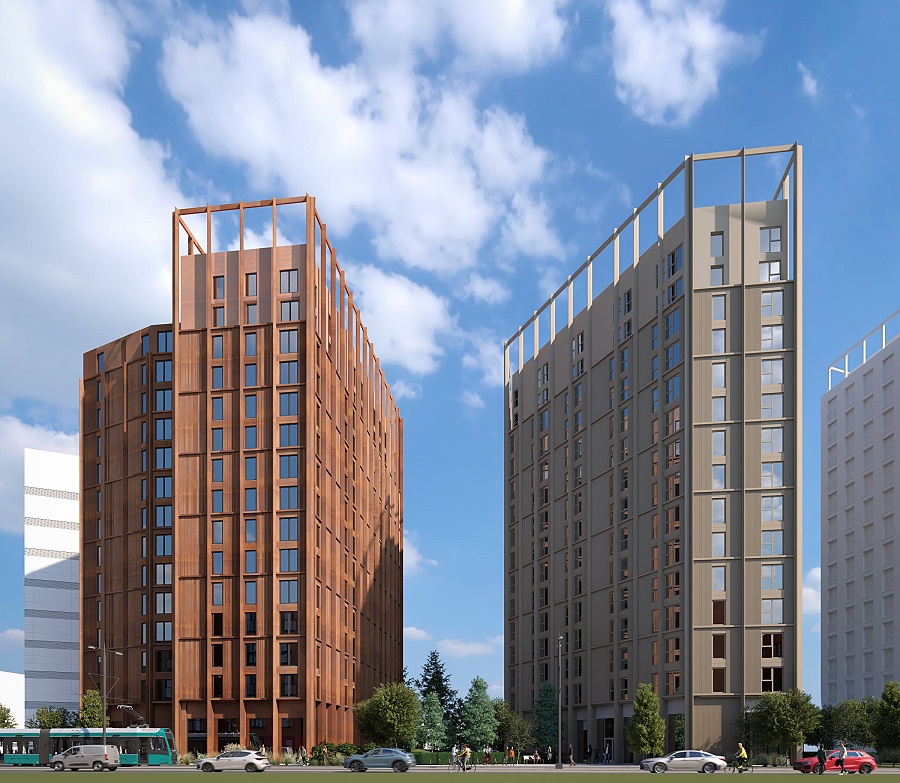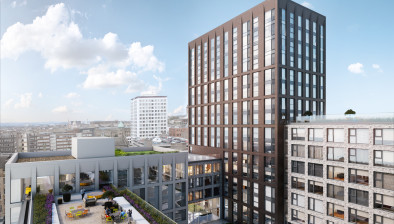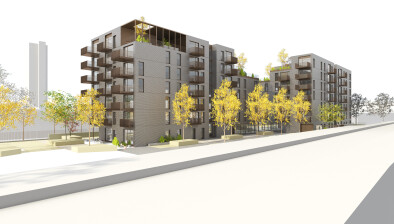Build-to-Rent projects ‘facing increasing planning delays’

S Harrison Developments has lodged plans for a c. £100 million residential-led development at Ocean Point 2 in Leith
The time required for Build-to-Rent (BtR) planning applications to be determined has significantly increased over the past decade, with 40% of sites achieving detailed planning permission last year taking at least a year to do so, according to the British Property Federation (BPF).
Analysis conducted at the end of the fourth quarter, in collaboration with Savills, examined planning trends in isolation for the first time. Notably, the proportion of BtR developments taking over a year to receive planning consent has increased from 7% (2014) to 40% (2023). Figures were consistent despite variations in scheme size and location, suggesting planning times are getting longer because of the application process.
The number of BtR homes with detailed permission in Q4 2023 was 58,000, the highest number on record. This suggests a strong pipeline of future growth. Starts, however, have deteriorated over recent quarters, reaching 12,500 units in Q4 2023, from a post-pandemic peak of 25,000 units in Q3 2022.
Despite this challenge, the analysis highlighted the sector has reached a significant milestone, with the total number of BtR homes completed in the UK reaching 100,300 units, an uplift of 17% nationally, year on year.
The sector continues to expand across the UK, as regions see a 23% year-on-year increase on the number of BtR homes under construction, almost double that of London (12%). The BtR pipeline in the regions has also increased by 8% quarter-on-quarter and 22% on an annual basis with 77,282 homes planned. Completions in London reached 46,700, and 53,600 in the regions.
The analysis follows the recent release of the BPF’s 2024 manifesto ‘Building Our Future’, in which the BPF said the industry’s partnership with the next government should give investors long-term confidence to boost building of new homes with a target of 30,000 build-to-rent homes a year.
Ian Fletcher, director of policy at the British Property Federation, said: “The Build-to-Rent market has grown significantly throughout the past decade. While reaching such a significant milestone (100,000 homes) for the sector is encouraging, we must ensure current challenges are temporary. Sentiment certainly is improving, and when interest rate cuts become real, rather than talked about, I would expect the sector to expand rapidly, given the strong pipeline of units that exist with planning permission.
“We lead an ambitious sector that delivers a great product. A target of 30,000 desperately needed rental homes a year is eminently doable, but it requires support. The research we are making available illustrates one of the structural challenges to the sector – time in planning is getting longer. Whilst we cannot say for certain what part of the planning process is leading to increased times, it is crucial to recognise that the more drawn out the development process, the longer it takes to get to an investor’s goal - income. It does, therefore, matter a great deal and is a brake on the growth of the sector.”
Guy Whittaker, head of UK Build-to-Rent research at Savills, added: “Investment into Build-to-Rent proved resilient in 2023, in spite of challenges around the cost of debt and continued material and labour-cost inflation. Investment continues to be directed towards development and the deals struck this year will ultimately deliver 12,000 much-needed homes for private renters.
“Investor appetite continues to grow, but the time taken to bring homes through the planning system, as our research demonstrates, remains a challenge. With schemes taking longer to work their way from application to permission, this reduces the number of ‘oven-ready’ sites, given investors are unlikely to take planning risk. Boosting the number of consented sites is therefore crucial to allow the sector to deliver on its huge growth potential.”









